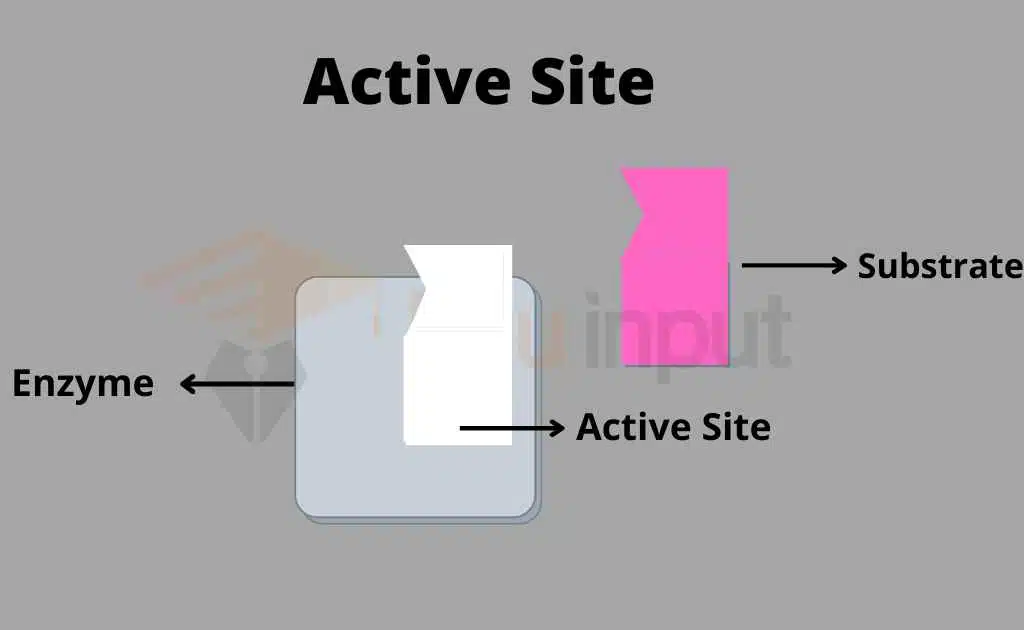What are Enzymes in Biology? – Definition, History, Structure, and Classification
Enzymes are the most important biologically active group of proteins that increase the efficiency of biochemical reactions and are specific for each type of reaction.
Enzymes increase the efficiency of biological reactions. They are specific for each type of reaction. The reactions proceed at a very slow speed without enzymes. Thus without enzymes life is impossible.

History and Discovery of Enzyme
French chemist Anselme Payen was the first to discover an enzyme, diastase, in 1833. A few decades later when studying the fermentation of sugar to alcohol by yeast.
Louis Pasteur concluded that this fermentation is caused by a vital force contained within the yeast cells called “ferments”, which are thought to function only within living organisms.
In 1877 German physiologist Wilhelm Kühne first used the term enzyme which comes from Greek “leavened” or “in yeast,” to describe this process.
The word enzyme was used later to refer to nonliving substances such as pepsin, and the word ferment was used to refer to chemical activity produced by living organisms.
Chemical Nature of Enzymes
All enzymes were once thought to be proteins, but since the 1980s the catalytic ability of certain nucleic acids has been demonstrated, refuting this axiom. Because so little is yet known about the enzymatic functioning of RNA.
The enzymes are proteins, though some are ribonucleic acid (RNA) molecules. RNA molecules translate information from DNA and create proteins.
Location Of Enzymes
Many enzymes are simply dissolved in the cytoplasm. Some enzymes are tightly bound to certain sub-cellular organelles. The enzymes are produced in the cell.
They are used near the site of their production. Enzymes are not always found uniformly within a cell; often they are compartmentalized in the Nucleus, on the Plasma membrane, or in subcellular structures.
For example, The enzyme of photosynthesis is found in the chloroplast. Some enzymes are involved in cellular respiration. These enzymes are present in mitochondria.
The enzymes involved in protein synthesis are present in ribosomes.
Structure and Composition of Enzymes
The globular structure and active site of enzymes are composed of hundreds of amino acids. They join together and form a globular structure.
Active site:
The catalytic activity is restricted to a small portion of the enzyme called the active site.
The reactants are called the substrate. Substrates are attached to the active site. The active site is composed of a few amino acids. The rest of the bulk of amino acids maintains the globular structure of the enzymes.

The active site of the enzymes is made up of two regions.
(i) Binding site:
It helps the enzyme in recognition and binding of proper substrate and forms ES (enzyme substrate) complex. This reaction activates the catalytic site.
(ii) Catalytic site:
The activated catalytic site changes the substrate into products.
Enzyme-Substrate Complex
The enzyme-substrate complex is a temporary molecule formed when an enzyme perfectly fits with its substrate. Without its substrate, an enzyme is a slightly different shape. It causes a conformational change in enzyme structure.

Co-factors
Some enzymes contain a non-protein part known as a co-factor which is essential for the proper functioning of the enzymes. But some enzymes consist solely of proteins.
They are essential for the proper functioning of enzymes. The co-factors act as a bridge between the enzyme and substrate.
They often directly take part in the chemical reactions during catalysis sometimes, the co-factors provide a source of chemical energy. This energy is necessary to drive a reaction.”
Types Of Enzymes For Attachment Of Cofactors
Enzymes are of two types based on the attachment of cofactors.
Apoenzymes
An enzyme, with a coenzyme or prosthetic group removed, is called an apoenzyme. Apoenzyme remains inactive. The addition of concentrated Coenzyme to the apoenzyme restores its activity.
Holo-enzmyes (apoenzyme + cofactor):
An activated enzyme, consisting of polypeptide chain and cofactor is known as a holoenzyme.
Classification of Enzymes
Enzymes are classified into the following categories:
| Enzyme | Presence | Function |
| Lipases | Pancreas, stomach and mouth | Help in the digestion of fats in the gut. |
| Amylase | Saliva, pancras | Helps change starches into sugars |
| Maltase | Saliva | Breaks the sugar maltose into simple sugars |
| Trypsin | Small intestine | Break proteins down into amino acids |
| Lactase | Enterocytes (lining of the small intestine) | Helps to digest lactose into glucose and galactose |
| Acetyl- Cholinesterase | Neuromuscular junctions, nerves and muscles | Breakdown of acetylcholine molecules (after muscular junction) |
| Helicase | X chromosome | The unwinding of higher structures like DNA and RNA |
| DNA polymerase | Polymerase γ is located in mitochondria | Synthesize DNA from deoxyribonucleotides |
Frequently Asked Questions-FAQs
What are 5 Examples of Enzymes?
Deoxyribonuclease
Lipase
Deoxyribonuclease
Lipase
Amylase
Is enzyme a protein?
Enzymes are proteins that are comprised of amino acids. Amino acids are linked together in one or more polypeptide chains. This sequence of amino acids in a polypeptide chain is called the primary structure.
How do enzymes work?
The enzyme recognizes its designated substrate. The substrate attaches to the active site of the enzyme, and this enzyme transforms this substrate into a product.
What is the opposite of an enzyme?
Enzyme inhibitor is the opposite of an enzyme. These are involved in the allosteric regulation of enzymes.






Leave a Reply